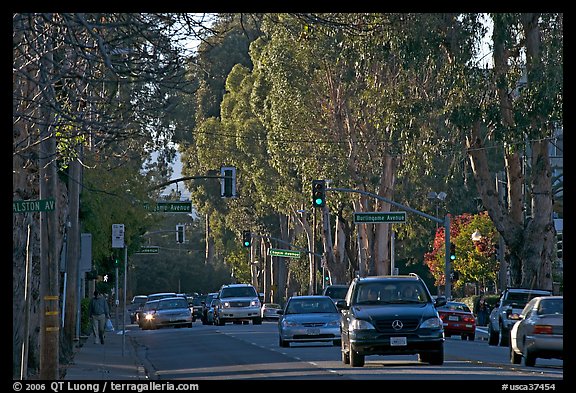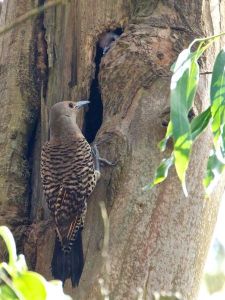California has been in severe drought conditions for over 10 years. Climate change is the underlying reason for the extremity of the drought. Maintaining our carbon sinks that sequester greenhouse gases causing climate change is one of our most important defenses against climate change and forests are one of our primary carbon sinks. Unfortunately, California’s forests are dying of drought and associated insect infestations. You might think that given these conditions, we would try to preserve our forests.
In fact, the drought has accelerated the war on our non-native urban forest in the San Francisco Bay Area. All trees and plants have suffered during our prolonged drought. Where trees are not irrigated in our parks and open spaces, signs of drought stress are visible. Today, I am publishing my letter to the IPM Director and Fire Chief of East Bay Regional Park District about the need to make a distinction between dead trees and trees that are not dead, but showing symptoms of prolonged drought. My letter explains why we must distinguish between dead (described as “die-off”) and living trees (described as “die-back”) when making commitments to destroy trees that we desperately need during this climate crisis.
Links are provided to email addresses of recipients of my letter. Please consider writing a letter of your own.
CC: Natural and Cultural Resources Committee, Matteo Garbelotto
As you know, the Park District hired the Garbelotto Lab at UC Berkeley to evaluate two species of trees in the parks, acacia and eucalyptus. The reports of the Garbelotto Lab were recently published on the Lab’s website. I am writing to ask that responsible staff read those reports and make adjustments in plans to remove trees as needed, based on those reports.

- “Investigating the fungi responsible for the recent large-scale dieback of Blue Gum Eucalyptus (Eucalyptus globolus) in the San Francisco Bay Area”
- “Investigating the causes of widespread Acacia spp. mortality in the San Francisco Bay Area”

The diagnoses for acacia and eucalyptus are entirely different. The pathogens are different in the two tree species. The pathogens killing acacia are new and they are lethal. The pathogens found in eucalyptus are not new. They have been latent and asymptomatic in eucalyptus for decades and have only become symptomatic because of the stress of drought. The pathogens found in eucalyptus disfigure leaves and twigs, but are not fatal.
Much like the microbes (bacteria, viruses, fungi, parasites) in our bodies that outnumber human cells, every tree is inhabited by microbes that are usually asymptomatic. If similar tests were done on other tree species in the Bay Area, similar results would be found where trees are not irrigated. The pathogens are always there. Drought has made them visible. If we were obligated to destroy every tree in the parks showing signs of drought stress, we would be required to remove most trees in the parks.
There are significant disadvantages to destroying living trees:
- A dead tree is not capable of resprouting, but a living tree is capable of resprouting unless it is a species that is not capable of resprouting. Eucalyptus, acacia, redwoods (not candidates for removal, but dying of drought nonetheless) and bay laurels are all vigorous resprouters. The stumps of these living tree species will require herbicide applications to prevent them from resprouting.
- The herbicides used to prevent resprouting travel through the roots of the tree to kill the roots. Herbicides used to prevent resprouting damage the roots of neighboring plants and trees connected by their mycelium networks.
- The trees that are destroyed release their stored carbon into the atmosphere contributing to the greenhouse gasses causing climate change. In the absence of those trees, less carbon dioxide is removed from the atmosphere in the future. Since the underlying cause of increased frequency and intensity of wildfires is the warmer/drier climate, removing living trees increases wildfire risks in the future.
- As more trees die, wood debris has accumulated to the point that there isn’t sufficient disposal capacity. When roadsides in the Berkeley hills were clearcut over one year ago, it took 9 nine months to dispose of the wood debris. Huge piles of wood debris were stacked on roadsides, creating a fire hazard. The more trees that are destroyed, the more wood debris is created.

I am therefore concerned about the Park District’s plans to remove one million trees from parks in the East Bay, according to press coverage: “In consultation with academics and state experts, they’ve identified a mass die-off of trees in the parks as a result of stress from drought, climate change and a proliferation of non-native species. Now they estimate they need to remove more than 1 million trees on their land, at a cost of $20 million to $30 million in one park alone. One area of the die-off, located between Mt. Diablo and communities in Oakland and Berkeley, is particularly concerning to Fire Chief Aileen Theile.”
In an earlier media interview Fire Chief Theile included eucalyptus in the list of dead trees: “The die-off, first noticed last October, has mostly hit eucalyptus, acacias, pines and bay laurels and has expanded this summer amid an exceptional drought.” Oaks are strangely absent from that list of dead trees, although it is well known that there are thousands of dead oaks in the Park District that have not been removed.
In summary, I ask for your reconsideration of Park District plans and public communications regarding tree removals in the parks:
- The Park District should confine plans for tree removals to dead trees. Dead trees are public safety risks that should be mitigated. Drought stressed trees that may be unsightly are not a priority for removal. Given our heavy rains in December, it is still possible that many will recover.
- Park District communications with the public should make a distinction between “die-off” and “die-back.” Acacias are accurately described as experiencing a die-off. Eucalyptus are accurately described as experiencing a die-back.
Thank you for your consideration.

















































